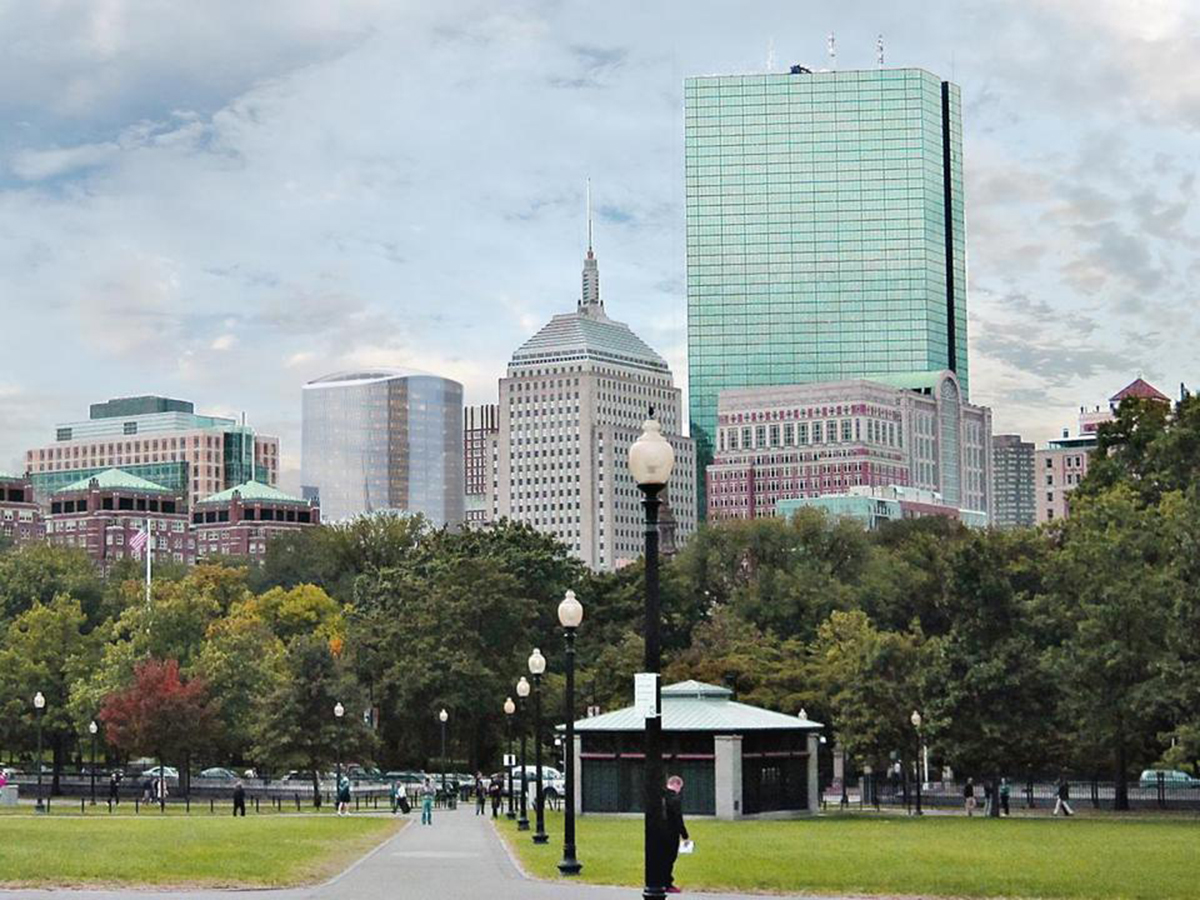Another Boring Glass Building to Rise in Boston

Rendering of new Hancock building. / Rendering via Skidmore Owings Merrill & CBT.
Another nondescript glass building is on deck to rise into the rapidly changing Boston skyline.
John Hancock has submitted a letter of intent with the Boston Redevelopment Authority to build a $350 million, 26 story building at 380 Stuart Street. Unfortunately, the proposed structure looks like most things we’ve seen going up around Boston during the building boom: dull.
The planned 280 foot tower has some curves but it lacks characteristics that make it exciting or interesting. At first glance it resembles the largely forgettable glass office building at 33 Arch Street in Downtown Crossing that is only notable for the fact you can drive a car through it at street level.
The design appears to fly in the face of Boston Mayor Marty Walsh’s stated desire to bring more exciting architecture to the city’s skyline. In a December 2014 speech to the Greater Boston Camber of Commerce, Walsh said that the city needs better and more innovative architecture as it grows.
“Too often, in recent decades, new buildings have been merely functional. I believe Boston can do better. We should aim for world-class design. Our historic buildings reflect our unique past. New buildings should project the values and aspirations of our growing city. We can balance the old and new. And we can do it with imagination,” said Walsh.
The proposed 380 Stuart Street building is not in line with its iconic John Hancock predecessors, now known as the Berekeley Building and 200 Clarendon, respectively. Both buildings won the Boston Society of Architects’ Harleston Parker Award for best new building at the time of their construction.
The building does have to address some external concerns with its design. Stuart street is occasionally windy and any kind of shadow creep would likely upset finicky neighbors. The building it is replacing is a mostly forgettable concrete structure from the 1920s and not of any historic significance. The 380 Stuart Street project does fall in line with Boston’s “high spine,” a product of 1960s planning efforts that led to a stretch of high and mid-rise buildings from downtown to the Prudential Center superblock.
The architectural team behind the project is Skidmore Owings Merrill & CBT. Colliers International is managing the project.
The project is different from many going up in Boston right now because it is self funded. John Hancock, and its parent company Manulife, are paying for the construction of the project out of pocket, free of third party financiers. The city is likely to receive $5 million in linkage funds for the project that is projected to employ over 1,500 people during the construction process.
If the approval and permitting process goes smoothly construction could begin as early as late 2016 and finish as soon as 2018.


